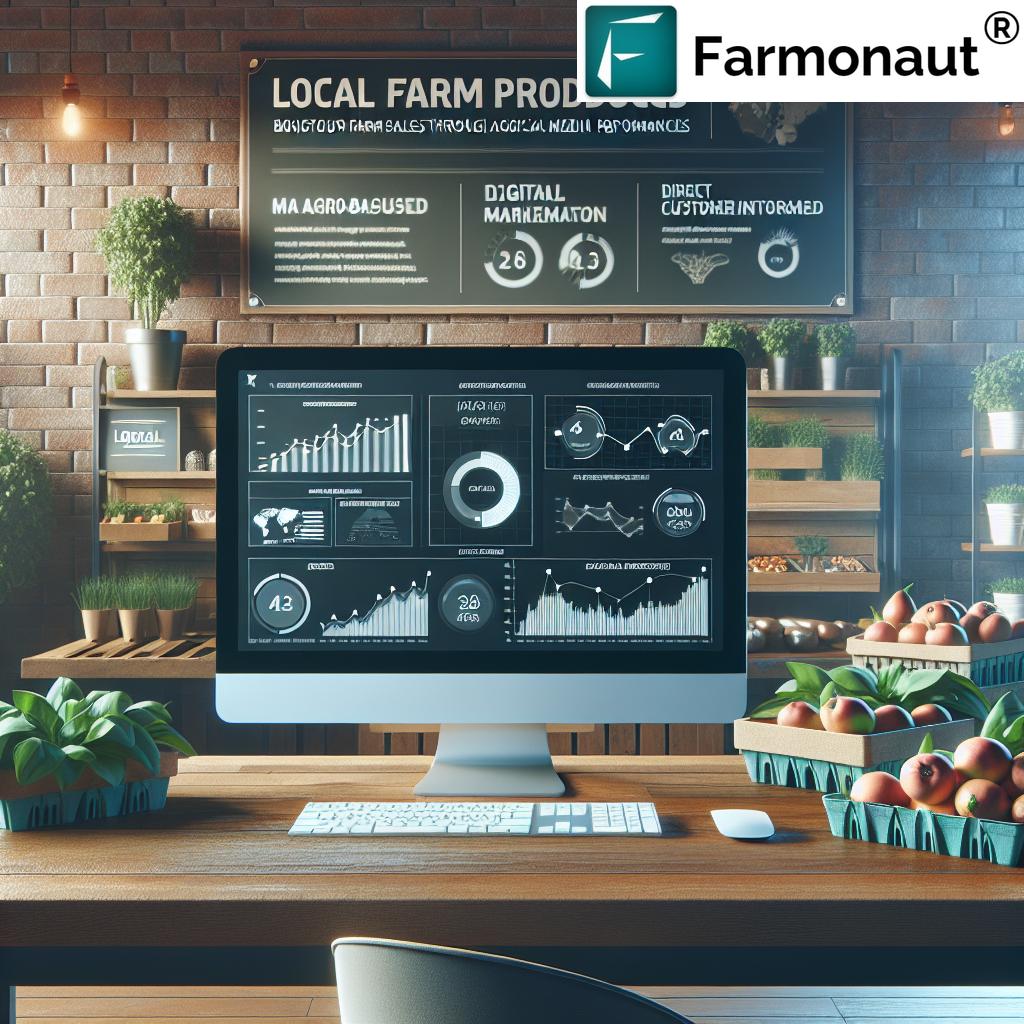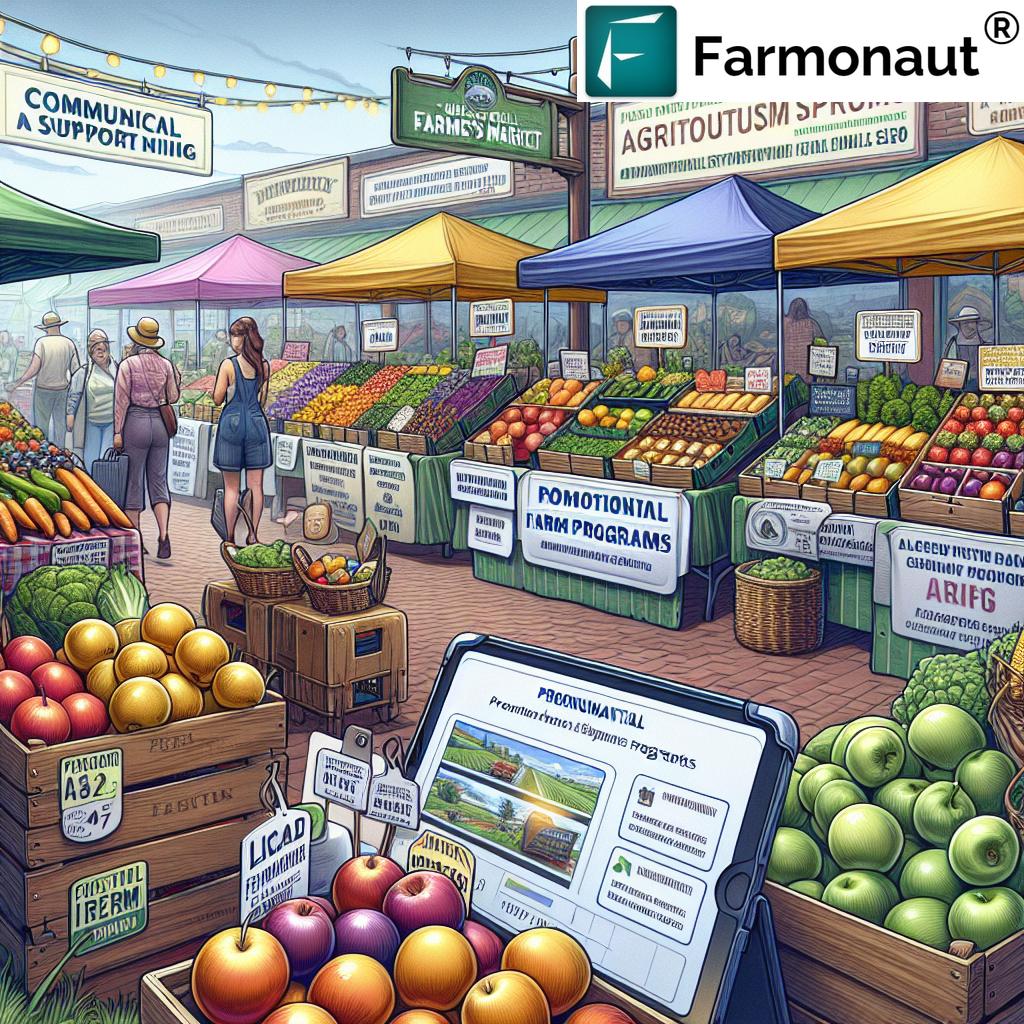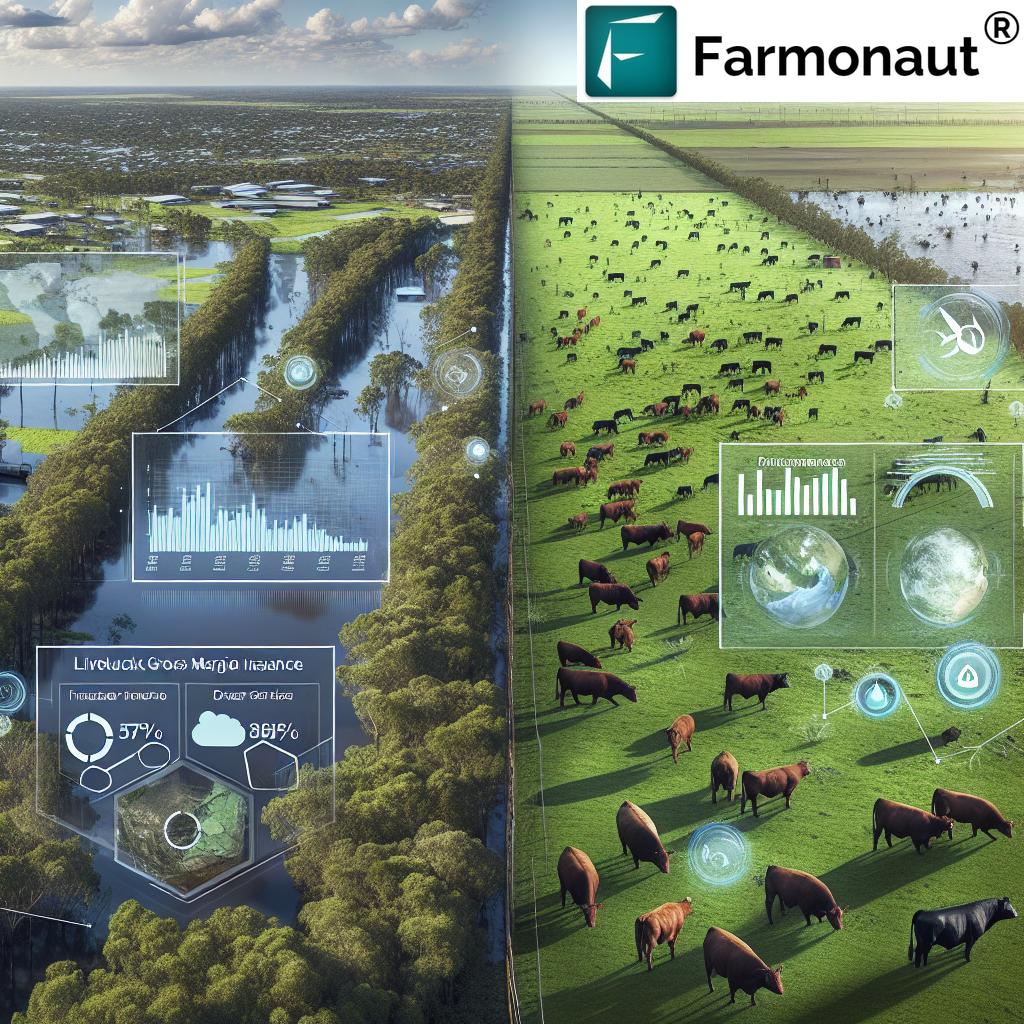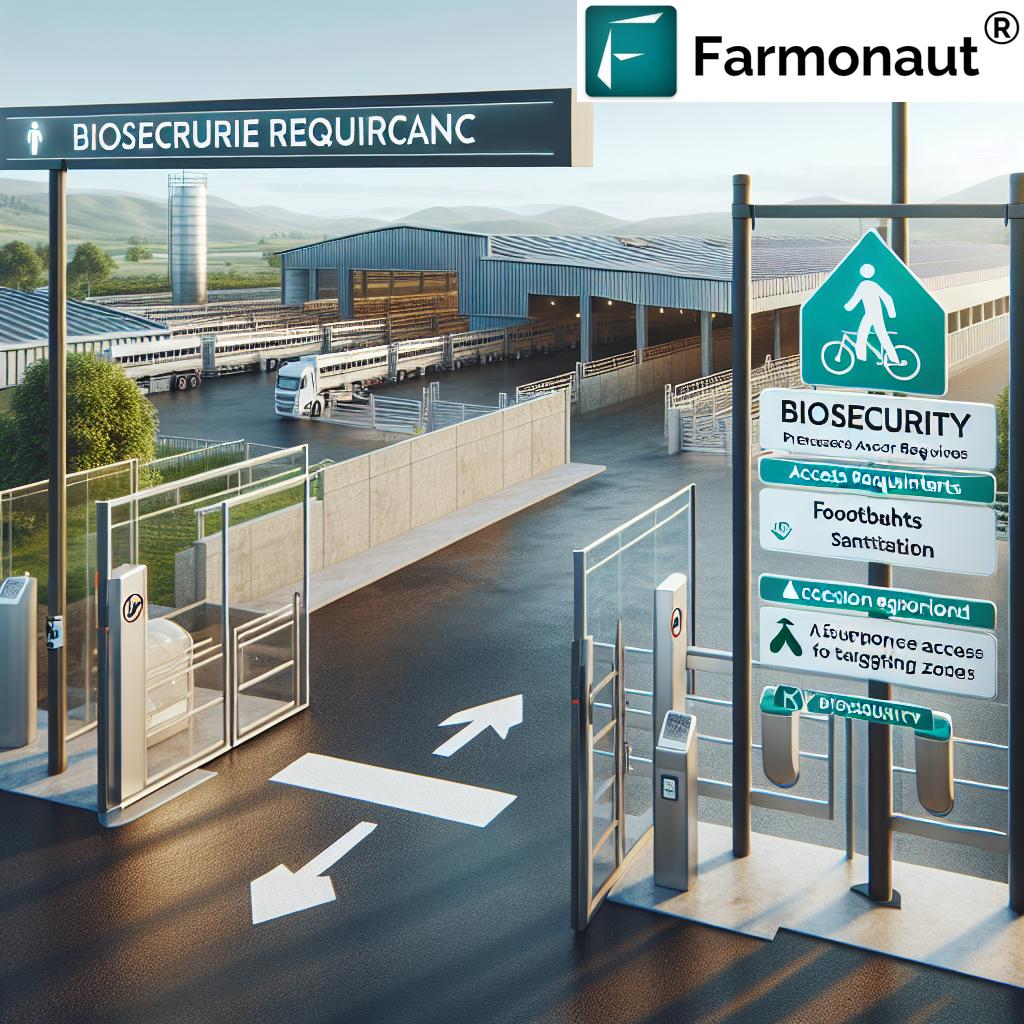Agriculture Advertising Strategy: 10 Ways to Boost Sales
“Digital ads can increase farm product sales by up to 30% compared to traditional marketing methods.”
Introduction: Developing Your Agriculture Advertising Strategy
In the dynamic landscape of modern agriculture, developing a targeted and effective advertising strategy is paramount for both smallholder and large-scale agricultural businesses. With farm product markets becoming more competitive and consumer preferences continually evolving, securing customer loyalty requires much more than simply growing a great product. Our approach emphasizes the value of blending proven traditional marketing techniques with progressive digital marketing strategies.
This comprehensive guide shares 10 impactful agriculture advertising strategies—spanning direct-to-consumer programs, farm marketing strategies, agricultural digital marketing, influencer marketing in agriculture, and more—to help your business boost sales, build trust, and sustainably grow your brand. We’ll detail actionable steps, real-world examples, expert insights, and up-to-date tools for each method.
Focus Keyword: Agriculture Advertising Strategy
Whether you’re an independent grower, an agribusiness owner, or part of a cooperative, these strategies offer practical, scalable solutions. With this guide, your team can improve market reach, enhance communication with consumers, and position your farm as a leader in the agricultural industry.
1. Direct-to-Consumer Marketing: Building Real Connections
Direct-to-consumer farm sales remain among the most effective farm marketing strategies to boost sales and foster strong, loyal customer relationships. By selling directly, we can demonstrate product freshness, share our farm’s story, and gain valuable feedback.
Farm Stands and Local Markets
- Farm Stands: Setting up stands in high-traffic and accessible locations enables us to sell products directly to consumers, ensuring consistent quality. Choose spots near urban centers, community areas, or roadside pull-offs for better visibility and access (source).
- Markets: Participating in local farmers’ markets creates opportunities for face-to-face engagement, which not only increases immediate sales but also builds long-term brand loyalty.
Community Supported Agriculture (CSA) Programs
- A CSA is a subscription-based model where consumers pay upfront for seasonal deliveries or pick-ups of farm products. These programs provide predictable income (capital) for us at the start of the season and foster a sense of shared community investment (source).
- By letting customers “share” in the farm’s harvest, we encourage direct feedback, word-of-mouth, and repeat purchases. Consider adding educational content about crops in weekly newsletters for additional value.
Benefits of the Direct Model
- Higher profit margins by eliminating middlemen
- Instant customer feedback aids in product and service improvement
- Opportunity to test new products quickly with a receptive audience
- Builds genuine relationships and generates social media content opportunities
Tip: Enhance your direct sales approach by offering seasonal boxes, recipe cards, or loyalty rewards to boost repeat sales.
2. Digital Marketing Strategies for Farms
With more customers turning to the internet to search for local farm products online, agricultural digital marketing is vital. Leveraging the power of social media, email, and content allows us to expand our reach far beyond local boundaries.
Social Media Marketing for Farmers
- Platforms such as Facebook, Instagram, and Twitter enable us to share engaging updates about our products, showcase farm life, and connect with customers in real time (source).
- Use regular posting, behind-the-scenes photos, videos, and customer reviews to create a trustworthy brand personality. Social media marketing for farmers effectively builds community and drives direct sales.
How to Begin:
- Choose the right platform: Target where your audience is most active (younger buyers on Instagram, local/mature buyers on Facebook, industry peers on Twitter).
- Post consistently: Maintain a weekly or bi-weekly content calendar including product launches, testimonials, farm milestones, and educational content.
- Respond to comments/messages: Active interaction with your online community builds trust and boosts algorithmic visibility.
Email Marketing and Newsletters
- Send newsletters about new product availability, harvesting seasons, agritourism events, recipes, and farm news to nurture and retain your best customers (source).
- Segmenting email lists according to customer preferences allows for targeted messaging and more effective promotions.
- Use email automation to remind customers of upcoming program renewals or to share educational blog content.
Content Marketing: Blog Posts, Guides, and Authority
- Creating informative, educational blog posts about farming practices, crop health, or product uses positions your business as a trusted industry authority (source).
- Video and blog content offer long-term SEO value, attracting new organic traffic and improving your website’s relevance for specific agricultural keywords.
Pro Tip: Farmonaut provides large-scale farm management tools and API-based integrations for real-time field data. Integrating these into your digital content strategy lets you share insights on crop monitoring, sustainability metrics, and precision farming, boosting credibility and attracting technology-savvy customers.
3. Influencer and Affiliate Marketing in Agriculture
The rise of influencer marketing in agriculture is transforming traditional word-of-mouth into powerful digital reach. Working with industry experts and influencers introduces our brand to new audiences in a relatable, credible way.
Influencer Partnerships
- Engage with agricultural bloggers, respected agronomists, or lifestyle influencers who have a relevant following. They can authentically share your farm story, showcase your products, and review your programs (source).
- Influencers amplify campaigns, attract younger buyers, and lend legitimacy to large-scale product launches.
Affiliate Programs
- Affiliate marketing incentivizes partners (bloggers, local chefs, agricultural educators) to promote your farm products in exchange for a commission on resulting sales.
- Create a straightforward affiliate signup process on your website, provide tracking tools, and share branded content for affiliates to use.
Tip: Encourage affiliates and influencers to share their honest feedback as reviews or case studies. This builds trust with skeptical buyers and increases conversion rates.
4. Participating in Trade Shows and Exhibitions
Face-to-face marketing at trade events remains a cornerstone for B2B agricultural sales and network expansion. Showcasing our products at trade shows, exhibitions, and industry conferences (agricultural digital marketing channels) lets us demonstrate quality and develop business relationships.
Why Participate?
- Gain exposure to distributors, retailers, and institutional buyers who prefer to see and sample farm products firsthand (source).
- Network with fellow farmers, learn about trends, and position your business as an innovative, reliable supplier in the industry.
- Use events to collect customer contacts, distribute printed materials, and promote agritourism events and workshops on your website and social media channels.
Optimize your event presence with Farmonaut’s fleet management service, helping you track logistics and plan efficient transport for your samples and displays.
“Over 60% of agricultural businesses see higher customer engagement using direct-to-consumer marketing strategies.”
5. Community Engagement and Local Partnerships
Direct investment in your local community offers a two-way benefit: consumers feel more loyalty to companies supporting their area, and we build lasting brand equity.
Local Business Collaborations
- Partner with restaurants, stores, co-ops, and institutions to increase product visibility and cross-promote. Feature your farm as their local supplier on social media and in-store menus (source).
- Provide product samples, joint educational events, or farm-to-table dinners to showcase your products.
Educational Workshops and Events
- Host agritourism events and workshops such as “pick your own produce,” composting classes, or farm-to-school field trips. These deepen consumer engagement and expand your marketing reach.
- Run seasonal events (pumpkin patches, corn mazes) to generate buzz and encourage families to visit, share on social media, and leave reviews.
6. Farm Video Marketing: Showcasing Practices and People
Video content is among the highest-converting digital assets in agricultural digital marketing. Farm video marketing brings your business to life—demonstrating product benefits, explaining sustainable practices, and humanizing your brand. Studies show posts with videos receive stronger engagement and sharing rates.
What Videos to Create?
- Product Demonstrations: Highlight unique benefits, onboarding guides, or “how it’s grown” stories, aligning with your audience’s interests and educational needs (source).
- Behind-the-Scenes: Show real people, authentic farm practices, and a day on the farm. Showcase challenges, successes, and sustainable practices to enhance transparency.
- Customer Testimonials: Videoed customer reviews can have powerful credibility for potential buyers.
Videos should be embedded on your website, shared through email marketing, and promoted via social media marketing for farmers campaigns to maximize audience exposure.
Did you know? Farmonaut’s advanced technologies offer real-time satellite-based crop health monitoring—making it easy to share authentic, data-driven updates in your next marketing video. Learn more about carbon footprinting for agribusinesses, a unique way to show environmental responsibility.
7. Implementing Local SEO for Farms
Optimizing your online presence for local search ensures your business shows up when customers look for local farm products online or farm tours in your region.
Google My Business and Listings
- Claim and update your Google business profile with accurate address, hours, website, photos, and reviews (source).
- List your farm on relevant directories (local tourism boards, fresh food producer listings, event markets, and wellness sites).
Local SEO Keywords and Content
- Incorporate city/region-specific keywords naturally into your website content (“organic produce in [Your Area]”, “pick your own strawberries [City]”).
- Create FAQ pages addressing shipping, pick-up locations, product availability, and farm safety.
- Solicit customer reviews and reply to them, boosting both local SEO for farms and consumer trust.
8. Agritourism Events and Workshops
Turning your farm into a destination through agritourism events and workshops attracts both local visitors and weekend travelers, generating new revenue streams and strong social buzz.
Popular Agritourism Initiatives
- Guided farm tours to educate the public on sustainable farming practices
- Pick-your-own fruit, flower, or vegetable days
- Cooking or canning workshops using seasonal produce
- Seasonal festivals: maize mazes, pumpkin patches, and hay rides (source)
Promote these events using social media marketing for farmers, event platforms, collaboration with local schools, and newsletters.
Explore how Farmonaut’s AI-driven crop advisory services can be incorporated into educational events, boosting attendance and improving learning outcomes.
9. Print and Traditional Advertising Methods
While digital tools drive much of today’s agricultural marketing, traditional tactics remain surprisingly effective in certain contexts—especially within rural or tech-cautious communities.
Print Advertising and Local Media
- Place targeted ads in local newspapers, community newsletters, or radio—particularly when announcing seasonal offerings (source).
- Sponsor local charity events, parades, or teams as an affordable means of hyper-local brand building.
Flyers, Brochures & Point-of-Sale Materials
- Distribute eye-catching, informative pamphlets at local businesses, hospitality venues, and community centers.
- Use printed materials to drive traffic to your website and social media via QR codes and unique offers.
Combine these methods with digital analytics—add tracking phone numbers, special coupon codes, or URLs to measure performance.
10. Showcasing Customer Testimonials and Case Studies
Today’s buyers increasingly seek social proof and third-party validation before making purchase decisions. Sharing customer reviews and detailed case studies can greatly enhance trust in your products and practices, becoming a persuasive tool throughout the buying journey.
Collect and Display Reviews
- Encourage happy customers to leave reviews on Google, Yelp, Facebook, and your website (source). Make it easy—send automated reminders or include a direct link after purchase.
- Highlight the best feedback on social media and marketing materials, with permission.
Use Case Studies for Authority
- Share real stories (with permission) of how your products, services, or practices solved problems for specific customer types (e.g., “How Our CSA Helped Local Restaurants Diversify Menus”).
- Include measurable results where possible: yield increase, cost reduction, customer satisfaction rates.
11. Data Analytics and Performance Tracking
The best marketing strategies depend on accurate, real-time information. Utilizing analytics tools is crucial for refining approaches and maximizing ROI.
Analytics Tools
- Employ free tools such as Google Analytics to monitor website traffic, user behavior, campaign effectiveness, and sales sources.
- For email, platforms such as Mailchimp offer detailed reports on open rates, click-throughs, and list growth.
- Social platforms (Facebook, Instagram, etc.) provide clear metrics on post performance, engagement, and audience demographics.
Adjusting Your Marketing Strategy
- Review your performance data regularly to spot trends, understand what resonates, and identify underperforming campaigns.
- Test new messaging, visuals, and offers—employ A/B testing whenever possible.
- Use insights to refine targeting, budgeting, and content creation. Keep your strategy agile for the best results.
Pro tip: Advanced platforms like Farmonaut’s API let you integrate satellite-based agricultural data into your business systems, allowing for data-driven decisions in field operations, sustainability approaches, and precision marketing.
View Farmonaut API Developer Docs
Strategy Comparison Table: Evaluating Key Agriculture Advertising Methods
| Strategy | Estimated Cost | Expected Reach | Implementation Difficulty | Time to See Results | Potential ROI |
|---|---|---|---|---|---|
| Direct-to-Consumer Marketing | Low – Medium | 1,000–5,000 (seasonal) | Easy–Moderate | 1–2 months | 20–40% |
| Digital Marketing | Low | 3,000–40,000 | Easy | 2–6 weeks | 25–45% |
| Influencer/Affiliate | Medium | 2,000–50,000 | Moderate | 1 month | 15–35% |
| Trade Shows | Medium–High | 1,500–10,000 (event specific) | Challenging | Immediate to 3 months | 10–25% |
| Community Engagement | Low | 500–5,000 | Moderate | 1–2 months | 20–50% |
| Video Marketing | Low–Medium | 5,000–50,000 | Moderate | 2–10 weeks | 30–60% |
| Local SEO | Low | 500–10,000 | Easy | 2–16 weeks | 15–35% |
| Agritourism Events | Medium | 300–2,000/event | Moderate | Immediate–1 month | 20–55% |
| Print/Traditional | Medium | 500–15,000 | Easy–Moderate | 2–8 weeks | 10–25% |
| Testimonials & Case Studies | Low | Ongoing/organic | Easy | Immediate–2 months | 20–40% |
Farmonaut: Precision Agriculture for Modern Businesses
As we build new marketing strategies, leveraging cutting-edge agricultural technology is a powerful differentiation point. Farmonaut provides advanced, satellite-based farm management solutions, making precision agriculture affordable and accessible globally.
With Farmonaut, farmers and agricultural businesses can monitor crop health, access AI-driven advisory, implement blockchain-based traceability, track resources, and manage carbon footprint—all from intuitive mobile or web apps (and via API).
- Satellite-Based Crop Health Monitoring: Access real-time NDVI, soil moisture insights, and make data-driven crop care decisions.
- Jeevn AI Advisory System: Get expert recommendations, weather alerts, and actionable field strategies tailored to your farm (increase yields and reduce waste).
- Blockchain-Based Product Traceability: Build transparency and trust for food companies and end consumers—learn more about traceability solutions.
- Fleet and Resource Management Tools: Optimize fleet use, cut fuel costs, and manage logistics for events, deliveries and B2B partnerships (discover fleet management).
- Carbon Footprinting: Show your commitment to environmental standards with real-time carbon monitoring.
- Crop Loan & Insurance Assistance: Satellite-backed verification for smooth loan and insurance processes (learn about crop loan & insurance).
Whether managing a single field or looking for large-scale farm management, Farmonaut’s robust, scalable platform empowers your team with actionable insights for sales, sustainability, and operational efficiency in today’s agricultural industry.
Farmonaut Subscription Plans: Powered for Every Scale
Farmonaut operates on a flexible, subscription-based model to ensure affordability for individual farmers, cooperatives, agribusinesses, and agencies. Multiple packages allow us to select services and scale as we grow.
Access Farmonaut easily from the web, Android, or iOS, or embed precision data with API integration.
FAQ: Agriculture Advertising and Digital Farm Solutions
How can I determine the right marketing mix for my farm business?
We recommend starting with 2–3 core channels—such as direct-to-consumer sales, targeted social media campaigns, and email marketing—then testing new options like influencer partnerships or local SEO as data becomes available. Consistently review analytics to reallocate budget and effort for best results.
What digital tools are available for farm marketing and management?
Beyond standard platforms (Google, Facebook, Mailchimp), specialized agri-tech solutions like Farmonaut empower us to monitor crop health, improve sustainability, and manage logistics using satellite, AI, and blockchain. These insights can be shared with customers, enhancing marketing credibility.
How do I leverage customer reviews and testimonials effectively?
Ask for reviews after each purchase or event, link directly to review pages, and reward repeat contributors. Always respond to both positive and negative feedback transparently on your website and social media—this builds trust and shows commitment to quality.
Why is local SEO for farms so important?
Most customers searching for fresh produce or farm events want local results. Local SEO ensures your business appears in these searches, attracting more visitors to your stand, market, or agritourism operation with minimal cost.
Can Farmonaut help me with sustainability and traceability?
Yes. Farmonaut’s real-time data enables carbon footprinting (monitor emissions, optimize resource use) and blockchain-based traceability (prove product origin for food safety and export compliance). These are valuable for marketing, certification, and building customer trust.
Learn more: Farmonaut Carbon Footprinting | Product Traceability
Conclusion: Integrating Modern Strategies to Drive Agricultural Sales & Growth
A robust agriculture advertising strategy empowers our farm and agribusinesses to enhance visibility, increase audience trust, and drive sales in today’s diverse and competitive markets. By combining both traditional and digital marketing techniques—such as direct-to-consumer programs, compelling farm video marketing, local SEO, agritourism, and data-driven performance analytics—we not only increase profitability but also build lasting relationships with our customers and communities.
As modern farmers, we must embrace both our regional heritage and global innovations. Tools like Farmonaut (available on web, Android, iOS, and API) put scalable, actionable data in our hands—helping us optimize everything from crop management and carbon footprint to product traceability and customer engagement.
Let’s strategically blend old wisdom and advanced technology, ensuring a sustainable and successful future for our farm businesses and the entire agricultural industry.
















